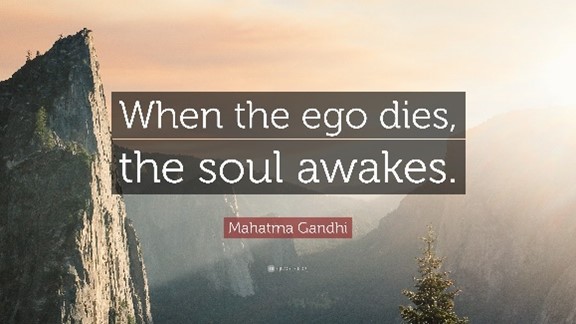Let me provide you with a really clear treatise on how you can improve your mindsets.
First, what are your mindsets?
At a basic level, our mindsets are the mental lenses that we wear that shape how we view the world.

You see, when we encounter a situation, we are presented with thousands, if not millions, of cues. It is our mindsets, or these mental lenses, that (1) selectively identify specific cues from the situation, and (2) interpret those cues in unique ways. These interpreted cues then guide how we think, learn, and behave.

As such, our mindsets are the most foundational aspect of everything we do.
Why would you want to improve your mindsets?
According to my research, only 5% of people consistently possess the mindsets that are most conducive to success in your life, work, and leadership.
In other words, 95% of people have mental lenses that cause them to see and interpret their world in ways that do not allow them to think, learn, and behave in their most effective way.
So, if we want to improve our success in the most effective way and at our most foundational level, it is critical that we focus on improving our mindsets.
(For more detail on this, see this article: Are You Overlooking a Personal Attribute That Drives Your Effectiveness and Success?)
To improve our mindsets, we need to understand what they really are
To understand how we go about improving our mindsets, it is best to add depth to our understanding of what mindsets are.
What are mindsets really?
While mindsets play the role of being mental lenses, they are actually neural connections in our prefrontal cortex connected to our associative processing mode.
(For more detail on this, see this article: The Cognitive Science Behind Mindsets)

You see, from our life’s experiences and a variety of other factors, we have come to rely upon specific neural connections to help us process and interpret the world we live in and the situations we face. Through repetitive use, these neural connections have become strong, meaning that they fire loudly and quickly, essentially overriding other neural connections that we have that might cause us to process and interpret our world differently.
When we understand this, it becomes easy for us to understand how we go about shifting and improving our mindsets: We need to strengthen our more positive mindset neural connections.
Good news: our brain is incredibly plastic, and this is more than doable.
How do you improve your mindsets?
There are three general steps to improving your mindsets.
1. Mind the Gap
The first thing we need to do to shift our mindsets is to acknowledge that how we currently see and interpret our world may not be the best way to see and interpret our world. And, the more specific we can be with recognizing and being honest about the quality of our current mindsets and how they differ from more optimal mindsets, the better.

This requires a couple things. First, it requires deep introspection. For most of us, we are not conscious of our mindsets and how they are directing our lives. So, we need to make the unconscious conscious. Second, it requires humility and a general open-mindedness to the idea that our current best may not be THE best.
To help people become conscious of their current mindsets and identify more optimal mindsets to possess, I have developed this FREE personal mindset assessment:
2. Learn the Language of Mindsets
Once we are mentally ready to do some mindset work, the next step is to learn the language of mindsets. Here is what I mean by that: I think that shifting our mindsets is quite similar to learning to count to 10 in a different language and becoming fluent in doing so.
If we want to count to 10 in a different language, the first thing that we need to do is learn the words associated with the numbers.

In mindset talk, that means that we need to learn what mindsets are out there, and how they influence our lives.
Through my academic research, I have identified four sets of mindsets that we need to be aware of and focus on.

These mindset sets range on a continuum from negative to positive, and your mindsets fall somewhere along each of these continuums. This is what your personal mindset assessment will reveal.
If you want to learn more about each of these sets of mindsets, see the following articles:
- Fixed and Growth Mindsets
- Closed and Open Mindsets (article 1, article 2)
- Prevention and Promotion Mindsets
- Inward and Outward Mindsets
3. Regular Practice and Interventions
Once we figuratively learn the words associated with the numbers (i.e., know what mindsets are out there and how they influence us), the next step that we need to take to become fluent at counting to 10 in a different language is to practice. On a regular basis, we need to spend 5, 10, 15 minutes practicing how to count to 10 in the new language. And, in the course of a matter of weeks, we will become quite fluent.
The same applies to our mindsets and shifting our mindset neural connections. We have got to practice.
Essentially, we need to hit the gym for our brain. The more we practice and use the more positive mindset neural connections, the stronger they become and the more readily we rely upon them.

We just need to recognize that just as going to the gym once does not make us strong, engaging in a single effort to improve our mindsets will not take hold. It is only after consistent and repeated small efforts that we are able to improve our mindsets.
Research has found that general ways to exercise your more positive mindset neural connections include:
- Watching short videos
- Engaging in short writing assignments (journaling)
- Meditation
- Going through a training
- Having conversations with others about the mindsets
- Changing our self-talk
If you want specifics for each of the four sets of mindsets, check out my upcoming book:
You can also get some specific suggestions by taking my FREE personal mindset assessment.
Finally, let me queue you in on a cool project I am working on at the moment: a digital mindset coach. It is an app that will send you regular notifications with some of these mindset exercises and some follow-up questions to help you retain what you learn about mindsets. I am really excited about it.
Conclusion
I hope this article helps you clearly understand how you can shift your mindsets to unlock greater success in your life, work, and leadership.
Even further, I hope you now feel empowered to improve yourself at your most foundational level.











